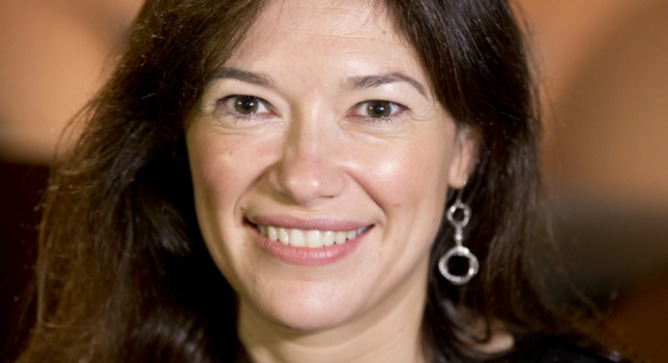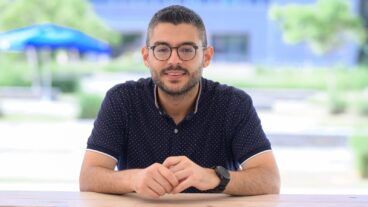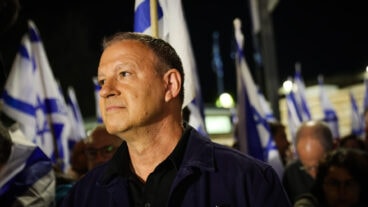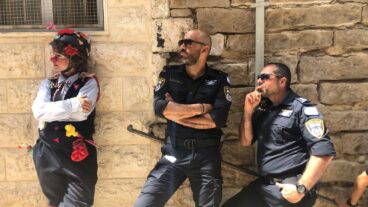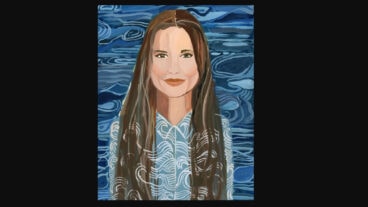“Somebody once said if they saw me on the street, they wouldn’t think I’m a mathematician,” Maria Chudnovsky says with a laugh.
Beautiful as she is brilliant, this 35-year-old Israeli-educated woman is not just a mathematician, but the winner of a $500,000 “Genius Grant” from the MacArthur Foundation, along with 22 other US-based awardees who have shown exceptional originality, creativity, insight and potential in diverse fields.
Spread the Word
• Email this article to friends or colleagues
• Share this article on Facebook or Twitter
• Write about and link to this article on your blog
• Local relevancy? Send this article to your local press
Her delight at winning the grant is heightened by the hope that the publicity will get more people interested in the esoteric discipline of “graph theory” in which she specializes as a researcher and associate professor in the department of industrial engineering and operations research at Columbia University.
The five-year payout comes with no expectations or conditions. The MacArthur Foundation says the grantees – this year also including a pediatric neurosurgeon, a marine ecologist, a journalist, a photographer, an optical physicist and astronomer, a stringed-instrument bow maker, a geochemist, a fiction writer and an arts entrepreneur — enjoy “unprecedented freedom and opportunity to reflect, create, and explore.”
“It is a big decision what to do with the money,” Chudnovsky tells ISRAEL21c.
She is tempted to enter riskier areas of research. “I can try lower-probability-of-success problems and won’t be judged as harshly if I fail,” she reasons.
Relationships between objects
Asked to describe the highly abstract graph theory in simple terms, Chudnovsky explains: “We study the properties of this construct – graphs — as a collection of objects, some of which have relationships to one another and some of which don’t. That’s all it is. It’s a good way to model things, because many things in the world are based on relationships between objects.”
Graph theory can be helpful in tackling lots of major conundrums — anything from efficiently scheduling airline flights to assigning frequencies to neighboring cell phone towers. However, Chudnovsky doesn’t concern herself with these sorts of problems.
“I don’t work on applications,” she says. “I prove theorems. Mostly I study questions: If you promise me that a graph has a particular property, can I promise you that it has some other property?”
Two Technion Genius Grantees
Chudnovsky moved to Israel at age 13 with her parents, both engineers, from Leningrad (now St. Petersburg). Always interested in math, she attended high school at the Leo Baeck Educational Campus in Haifa, which offered an advanced math curriculum called Columbia, ironically enough.
She earned her bachelor’s degree in 1996 and her master’s in 1999 at the Technion-Israel Institute of Technology, and is actually the second Technion graduate to be named a MacArthur Fellow in the past three years. The other is Cornell Prof. Michal Lipson, an optical physicist.
The Genius Grant took Chudnovsky by surprise, but her reputation in mathematics is solid. Back in 2004, when she was just 27, Chudnovsky was hailed by noted graph theorist Vašek Chvátal in a Popular Science article with these words: “Young mathematicians are called ‘promising’ if they are expected to become at least half as good in 10 years as Maria is now.”
A strong field in Israel
A series of happy coincidences led Chudnovsky to graph theory — a subfield of discrete mathematics, which deals with objects that can assume only distinct, separated values. Her Technion master’s adviser, Ron Aharoni, specialized in discrete math. Paul Seymour, her adviser for her second master’s degree, earned at Princeton University, is involved in graph theory.
Chudnovsky also got her doctorate at Princeton, where she was a research fellow at the Clay Mathematics Institute from 2003 to 2008 prior to joining the faculty of Columbia.
“I’ve been in the United States for 12 years, but I think of myself as somebody who came from Israel,” she says, noting that her transition from Technion to Princeton was quite seamless.
“My field is extremely strong in Israel; it’s one of strongest places in the world for this kind of mathematics,” Chudnovsky says.
At Columbia, she teaches mathematical modeling to undergrads and graduate students, as well as graph theory. Married to New York City Opera principal violist Daniel Panner, Chudnovsky enjoys classical music and art, and occasional visits to her parents in Israel.




